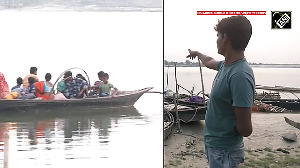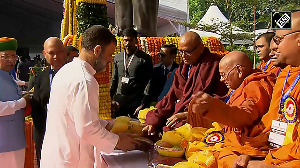An Indian aeronautical engineer has invented a device that accurately measures the distance between an aircraft and the runway in adverse weather conditions, thus enabling pilots to make safer landings.
The instrument, built by Joseph Pichamuthu who was formerly with the National Aerospace Laboratories, helps a pilot make a safe landing even when the aircraft is directly facing the sun.
"As the visual range is not uniform when a pilot begins to make a landing while directly facing the sun, at times he suddenly sees the runway in front of him," Pichamuthu said.
Existing instruments use manual assessment of the meteorological optical range (MOR) to deduce the distance between the aircraft and the runway.
Pichamuthu's device incorporates the effects of anisotropic atmospheric brightness to quantify the reduction in visibility of objects viewed in directions of high brightness.
"Minor modifications to existing instruments at airports would enable them to register true values of MOR and the runway visual range in a direction relevant to the pilot," he told PTI in New Delhi.
The current practice of ignoring directional effects could result in reports of unduly high values of MOR and thus of runway visual range, which could prove dangerous for a pilot landing an aircraft, said Pichamuthu, now a professor of electronics and communication engineering at Sir M Visvesvaraya Institute of Technology in Bangalore.
The device would prove helpful to pilots particularly during exigencies, when they have little time to modify the aircraft's flight path.
During research, Pichamuthu's device was tested at the Indira Gandhi International Airport, which experiences foggy conditions and a high degree of sunlight frequently.
The MOR values were assessed with the manual method used at the airport and with Pichamuthu's device, which was found to make more realistic assessments.
"The device can be fitted to runway visual range instruments and require minor modifications to the software," he said.
Pichamuthu, who has been honoured with the prestigious Vilho Vaisla Award by the World Meteorological Organisation, said, "I would not like to patent my invention as it is for greater common good."






 © 2025
© 2025